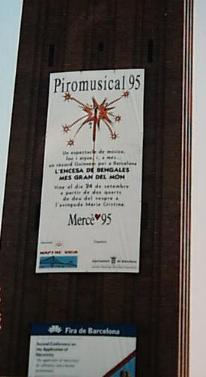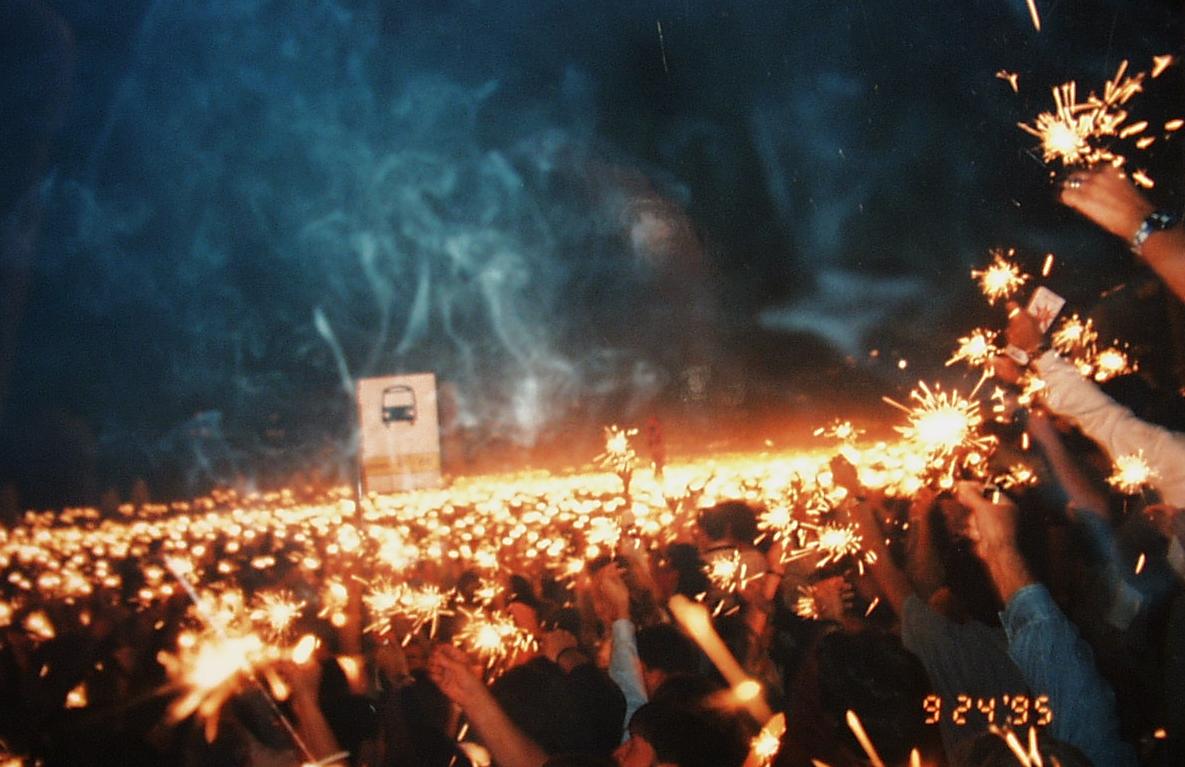After Saturday night’s festivities at El Correfoc we were wondering what would be in store for us on Sunday. The newspaper had a listing for a “Piromusical” at a large square at the base of the National Palace around Montjuic Fountain. The site was ready made for public displays with the Palace standing on a tall hill with stairs, plazas, and fountains cascading down the hillside.
The Montjuic Fountain was at the base of the hill, itself very large and ornate flanked on both sides with huge squares. Following the line down from the Palace was a very wide street four or five blocks long which opened on another very large fountain and square. All of this was blocked off from traffic during the festivities. (The street was Reina Maria Cristina).
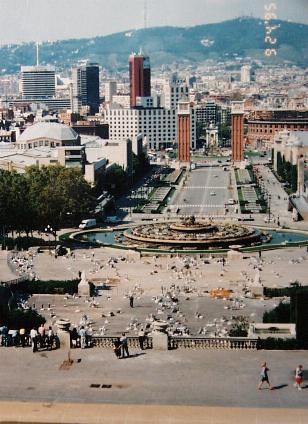
We arrived at the shoot site in the afternoon by accident. We had gone up to Montjuic from the back side off the harbor to see the museums in the park. I wanted to scout out the site during daylight so we walked towards the Palace and as we were enjoying the view of the city from up on top, I noticed the fountain and we walked down to it via the many flights of stairs and escalators.
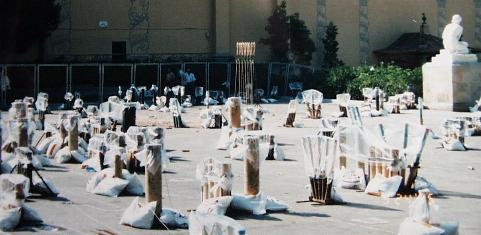
As we approached the last level above the square, I was delighted to see the mortars, rocket racks, mines, and wiring for the nights events. The
racks were all very well used and consisted of both cardboard and steel mortars.
While I had to observe from outside the fence, it looked like the mortars varied in size from 2 to 6 inches. None were set in barrels of sand, the operators had sand bagged them very heavily. The square must have been 50 by 75 meters and was virtually covered with pieces. Wire was running everywhere but there were no operators to be seen. We asked a guard where everyone was and, as we should have figured, they were at lunch. (Lunch in Spain is a very big deal, no one
misses it and it can last from 2 to 4 hours.)
As it was just getting to 2 p.m. we figured that it could be hours before the operators returned so we headed down into town for our own lunch and to rest
up prior to the evenings activities.
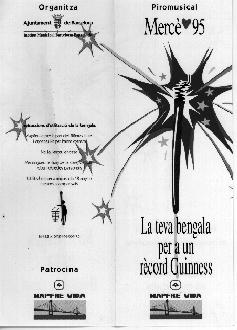
We headed back down to the square about 7:30 p.m. while it was still light. We had read in the paper that the show started at 8:30. When we arrived, the main street, which had been closed off for the festival, was about one third full.
Here we have to switch to a density factor because while the street appeared almost full, in the next two hours the crowd would quadruple and they would all fit into this same street with the overflow crowded into the large plaza at the end. We were lucky enough to find a seat on a row of fountains that ran the length of the street. As we waited the square just kept filling up. We waited for two and a half hours chatting as best we could with other Barcelonans.
(The official estimate for the size of the crowd was 500,000.)
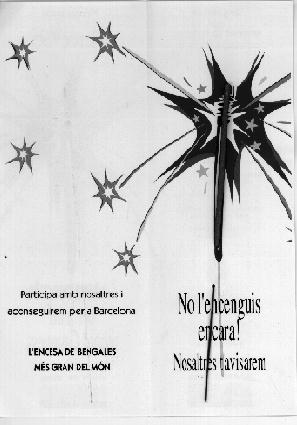
During the wait, there were young people carrying large black shoulder bags and were distributing the “Bengalas” or sparklers for the attempt to break the world’s record for the most Bengalas lit simultaneously in one place. Everyone in the square had at least one and some kids couldn’t wait and lit theirs early but most people waited to join in the attempt.
The Bengalas were gold in color, about 5 inches long and very easy to light.
At 9:30 p.m. the music started – the whole show was choreographed to show tunes and the P.A. system was excellent. They used the fountain at the top of the street (Font Montjuic) to warm up the crowd. The fountain danced to the music and they lit it with beautiful colored lights. It was a great start.
Then the “real” show began. It will be impossible for me to relay all the effects used as there were so many. The choreography was excellent – the music was
great, the crowd seemed to really appreciate the show.
I’m not sure if the operators only shot chlorate stars or if, like Saturday night, the intensity of the colors was due to our very close proximity, but they seemed
to be the most vibrant colors I’d ever seen. And what a show! It seemed to never end. One effect after another all appropriately set to the specific piece of
music.
For example, when they played the theme from “2001”, the effects grew in intensity with the music, and all of the major chords were set off by precisely timed shots which broke at the just the right time. When the smoke would linger in the square, the operators would turn on the fountain again and use it to keep your attention until the smoke had a chance to rise over the surrounding buildings and dissipate.
The show stopped about 10:30 and the lights went out in the area. Everyone was instructed to light their Bengalas. The account in the next mornings paper
stated that we had set a new world record with over 270,000 bengala lit in one place.
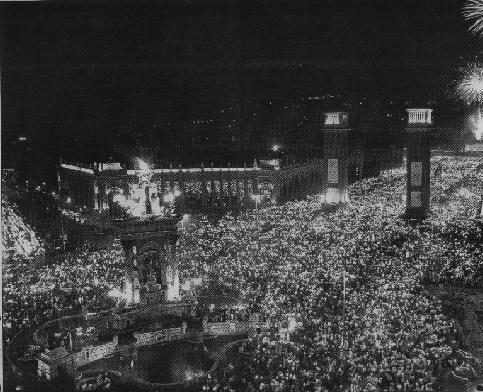
After the bengalas burned out, the show started up again. At one point, while doing songs from Phantom of the Opera, they launched an effect which I think was a bottom shot that broke and launched long, horizontal filaments of color. (I couldn’t see any parachute, but they could have used them.) Gold, blue, red neon like colors in a mass of 5 or 6 which hung, falling, in the sky for what seemed to be 2 or 3 minutes. They looked like neon lights running horizontally. Some changed colors as they dropped slowly, gold to blue, red to white. They were most unusual and very beautiful.
Then there was the finale. I can still see the sky covered with the most intensely colored confetti I’ve ever seen. The salutes were deafening. What a show, I’m
still smiling with the feeling.
The operators, we found out later, were Pirotecnica Igual from Barcelona.
The other nice thing to know is that the PGI (Pyrotechnics Guild International) was represented by at least one member at this record breaking event.
